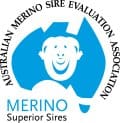 MERINO rams are being sought for the 2016 joining in the unique Merino Lifetime Productivity Project – believed to be the first trial of its type in Australia.
MERINO rams are being sought for the 2016 joining in the unique Merino Lifetime Productivity Project – believed to be the first trial of its type in Australia.
Breeders will pay entry fees of $2500-$3000 for their sire to participate in the project, believed to be the only trial studying lifetime Merino productivity in Australia or the world.
Australian Merino Sire Evaluation Association executive officer Ben Swain said the project will generate a unique dataset incorporating all production traits, including reproduction, lamb survival and visual assessments, made over the lifetime of an unselected ewe base.
Mr Swain said the project may not be the only one in the world, but it is rare for Merino sires to be assessed on such a broad cross-section of Merino types as in the project. The Australian Wool Innovation/AMSEA project is designed to leverage current sire evaluation trials run at several sites across Australia.
Ewe productivity will be measured for five years
AMSEA chairman Tom Silcock said progeny from Merino sires are typically assessed in sire evaluation trials or in studs up to two years of age, but this will be extended to five years for ewes born into the lifetime productivity project.
“This certainly hasn’t been done in AMSEA sire evaluation trials before.
“And AMSEA trials have never been able to look at fertility, because the trial is finished before anything is bred from,” Mr Silcock.
“I don’t know if anything like this has happened in Australia before.”
Lifetime fertility and dual purpose traits to be studied
Mr Silcock believed Merino breeders were starting to realise what the project could mean.
“It’s tackling what really happens after we’ve measured and sold the ram.
“A lot of what he is predicted to do is really lost track of and nobody has really put a litmus test on it.”
Key traits that will be measured in the project will include fertility and lamb survival, he said.
“The data that we are going to get out of this trial is going to very important in understanding and analysing more about that.
“The question that has been flagged about those animals we are getting better fertility and growth rates out of is, are they quick out of the box but run to a quick finish?” Mr Silcock said.
“It will be really enlightening to find out what happens when they have been breeding lambs for four and five years, compared to the more traditional Merinos?
He is sure that some of the “modern-type” Merinos will have the right attributes that provides longevity, but others might also be “finished” by 3-4 years-old.
With each project sire being joined to about 90 ewes each year, the project would generate “real numbers” for analysis, Mr Silcock said. Ewes would be retain for later study and wether lambs would be slaughtered and their meat qualities evaluated.
Mr Swain said entrants in the project will be provided with the full range of results that AMSEA publishes, including within site breeding values as well as ASBVs. Regular field days will also be held at the sites for inspection of sire progeny and to release result updates.
Participants will need to provide 92 doses of semen for each ram. Doses in addition to what would be normally required for the sire evaluation trial (between 50 and 60) will be purchased at $10 per dose excluding GST. The payment will be made in the form of a reduced entry fee that is charged by the site to the entrant.
There will be a limited number of spaces available for fully funded entrants that meet certain selection criteria and will be designed to enhance the genetic diversity of the trial, he said.
How to nominate a Merino sire
Owners are able to nominate up to three sires. There will be 120 sires in the project and 24 have already been joined this year.
“So the reality is that most of the owners will probably only get one sire into the trial next year, as spaces are limited,” Mr Swain said.
We ask for three nominations so we can have a bit of selectin pressure on the sires we put in.”
Mr Swain said the project is looking for a range of different sires to meet the needs of the project design.
“We will use ASBVs to do some of the selection.
“That is we are looking for rams that are extreme for traits like fleece weight, fat, eye muscle depth and reproduction,” he said.
“But we are also keen to include rams that are not currently in MERINOSELECT so will be selecting some rams based on their industry impact outside of MERINOSELECT.
Owners of nominated sires will be contacted by AMSEA in early December to inform whether their nomination has been successful and to arrange semen delivery for those sires that will be joined in 2016. Owners of successful sires will be asked to complete an AMSEA sire entry form as well an entrant agreement prior to the entry being finalised.
Breeders can follow this link to the Merino Superior Sires website to download the nomination form. Complete and return it to AMSEA by the closing date of 20 November 2015. Once nominations are closed, sires will be allocated to each site based on a number of selection criteria including genetic diversity and linkage.
Mr Swain said project participants will be able to benchmark their rams against some of Australia’s leading sires and generate solid linkage for their own operation within MERINOSELECT.
“This in turn increases the accuracies of their breeding values.
“Higher accuracy breeding values means more confidence in using the information and greater genetic gain,” he said.



HAVE YOUR SAY